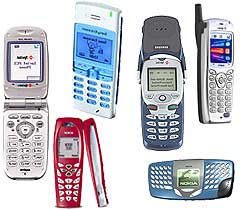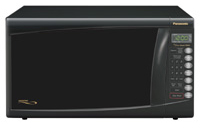Nearly everyone uses radio waves in some form day after day. The
technologies that depend on them is vast and ever-growing. These technologies
range from cordless phones and garage door openers to radar and microwave
ovens. Radio is not a dead technology either. It is constantly having
research devoted to it and new technologies and innovations are coming
about from this research. The trend towards wireless internet and
more versatile cellular phones are just some examples. Ironically,
the fundamentals of radio waves is relatively simple (atleast when
compared to the vast array of technologies that now implement it).
|
|
Cordless phones use radio
waves to allow individuals to walk around freely in their home
without the need to be bound by a cord while talking over their
land-based phone line. |
Cell phones are a miracle
to modern day living. Unlike previous eras where communication
was done strictly across a hard-wired telephone line, cell phones
now give the freedom to those that can afford them a radio-based
uplink to the rest of the world. Not only are they for voice
communication, but they also allow for transmission of virtually
any kind of digital data. |
|
|
|
Microwave ovens are another
great invention from the 20th century. They use radio waves
in a specific frequency range in which water, fat, and sugar
molecules happen to absorb and convert directly into heat. This
frequency range also happens to move right through glass and
most plastics. Unfortunately, metal reflects radio waves thus
causing issues while trying to use a metal pan or bowl (sparks!!!). |
There are numerous more technologies that are also either based off
of or incorporate radio waves in their design, far too many to list.





